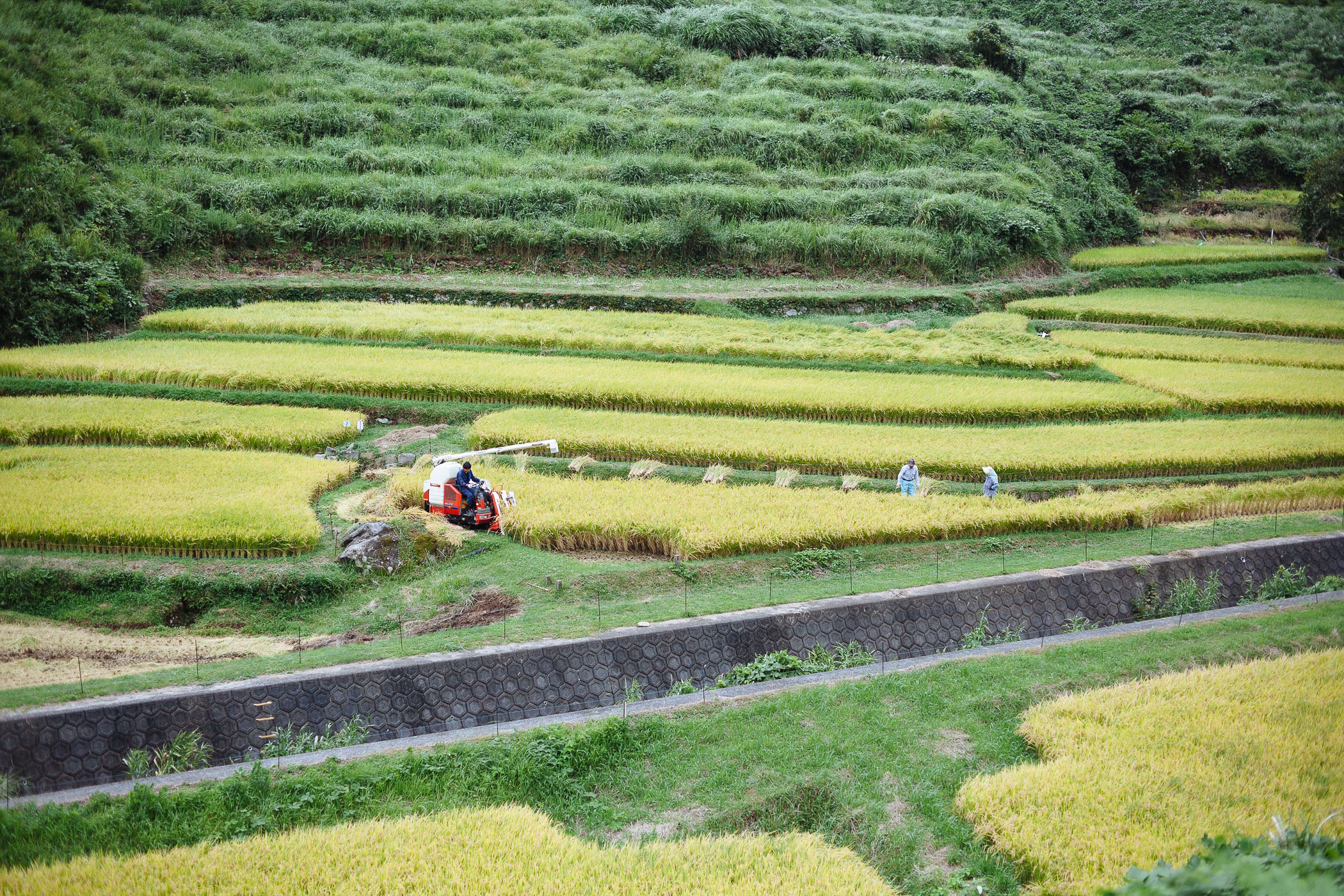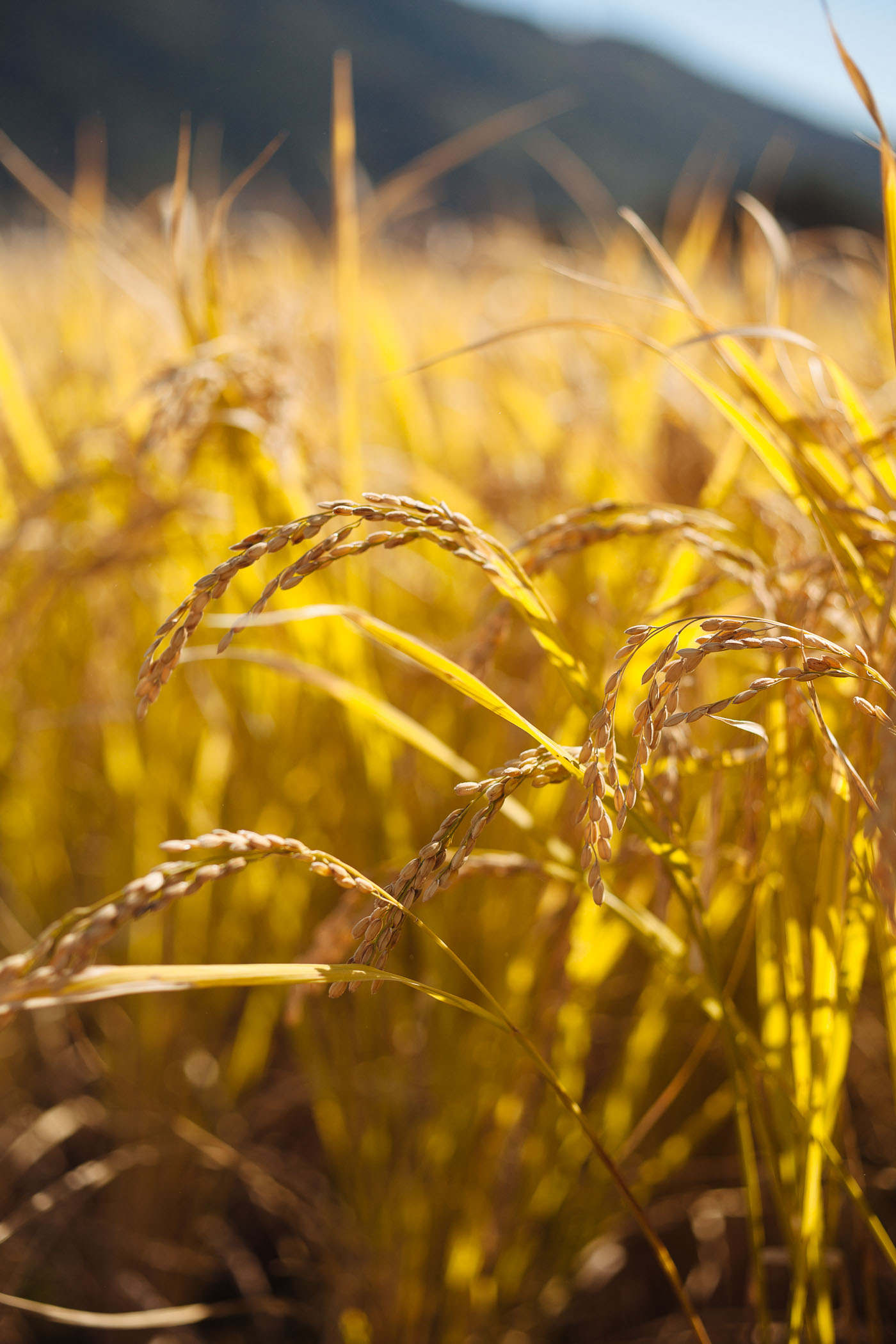Newly harvested rice speaks to the Japanese soul of the divine

In the waning glow of autumn the rice fields yellow with age. Paddies are drained in preparation for the harvest and the seed grains begin to dry on the stalk. Flaxen tassels sway in the autumn breeze amidst fields of golden grasses, a sight as quintessentially fall-like as the blazing foliage of sugar maples in New England. When they bow heavily towards the earth, the tillers are ready to yield their crops to the farmer. Inekari, the rice harvest, is a time for reaping what has been sown. Autumn is an active time, a time when farmers make haste in dry spells between rain while always on the lookout for typhoons that could thwart the harvest of a long tended field. I imagine that if the farmland of Karatsu were viewed from far above, the network of fields would look like a bustling hive.
There is perhaps nothing more simple and divine at the Japanese table than a pristine bowl of snow white shinmai, new rice, to close an autumn meal. Like the wafer at mass, newly harvested rice speaks to the Japanese soul of the divine, of things both eternal and ephemeral. The word gohan simultaneously stands for both rice and food because rice is food. And it’s also so much more. Rice is the foundation of Japanese cuisine, the heart and soul of the Japanese person, the sprit of the nation. Shinmai is cooked with care and eaten with reverence. With a more porous grain it absorbs water more quickly and so requires a little less than usual. And for the same reason, it must it must never soak in the washing water and be tainted by residual bran dissolved there. Shinmai is most typically celebrated and eaten as hakumai, pure white rice. What it lacks in nutrients it possesses in purity. A friend annually gifts us with a box of shinmai from Nigata where rice grows particularly delicious and throughout October we feast. In Japan the experience of flavor is determined by so much more than just the taste on the tongue. Sight and aroma come first, followed by texture, taste, and nodogoshi, a thing we don’t consider in the west and therefore cannot express in English. It is the feel of food passing through the esophagus. This too is a considered part of the experience of eating. Shinmai excels in all areas of flavor. It glistens, waxy and brilliant, like freshly fallen snow. Fluffed up in the pot and gently scooped into the bowl, it is light and airy in feel. It has a wonderful resilience and elasticity on the tooth and sweetness on the tongue. And if you chew every so lightly you can feel the kernels flowing down the throat and into the soul.
